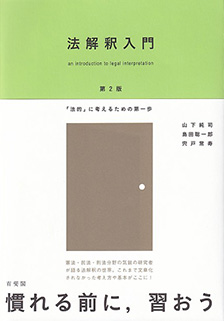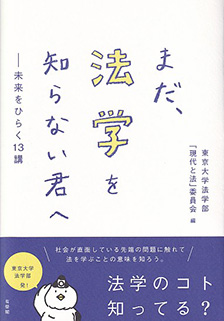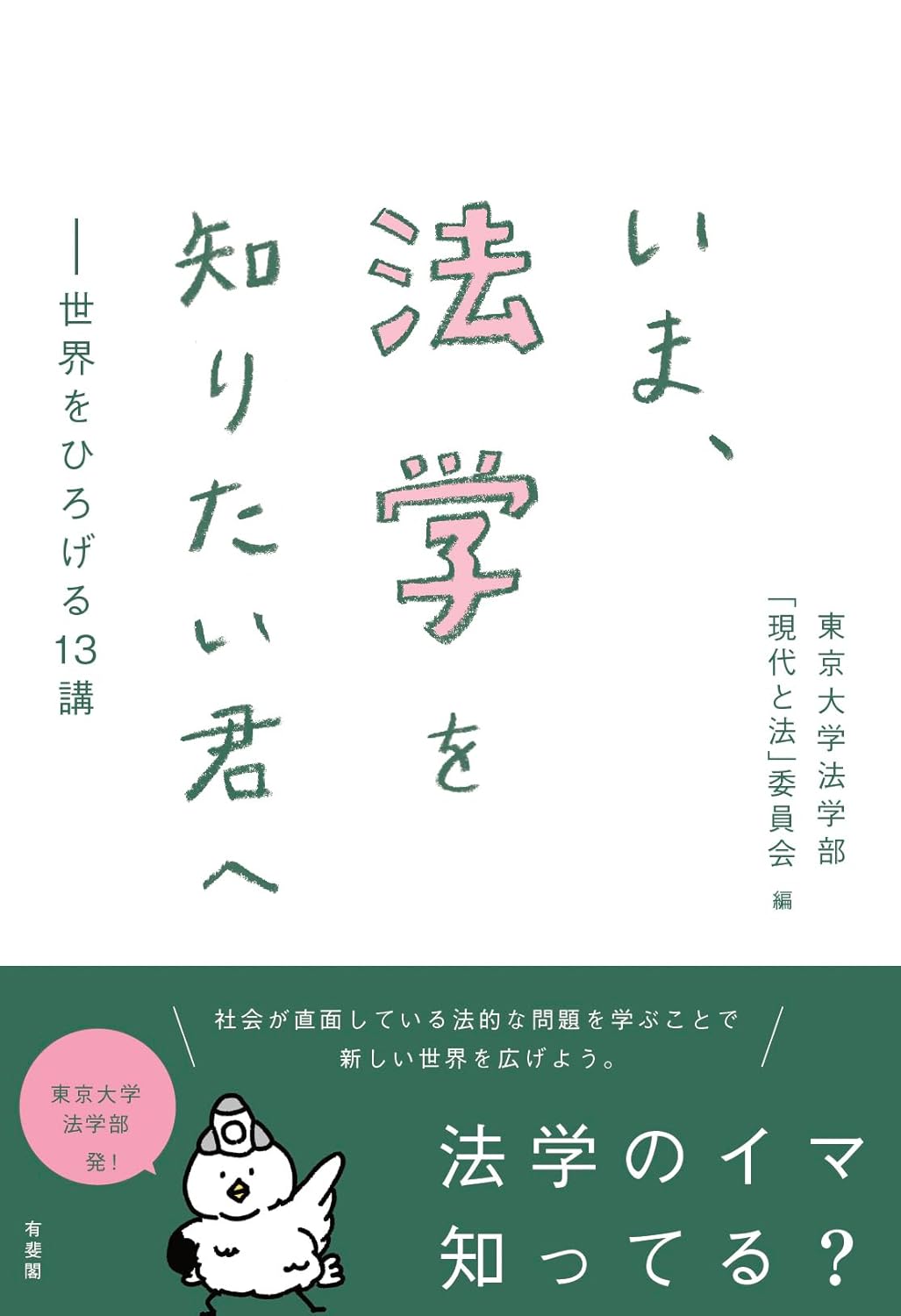
Title
[Second Edition] Ho-kaishaku Nyumon (An Introduction to Legal Interpretation - First Steps toward Developing the “Legal Mind”)
Size
244 pages, A5 format, softcover
Language
Japanese
Released
December, 2020
ISBN
978-4-641-12624-4
Published by
Yuhikaku Publishing
Book Info
See Book Availability at Library
Japanese Page
This book is a primer on legal interpretation, covering everything from the basics of interpretation to applications. Actual cases are used from the three fundamental domains of constitutional law, civil law, and criminal law.
There is a common misconception that success at a university law department can be achieved solely by memorizing numerous legal provisions. Unfortunately, high school guidance counselors often make precisely this statement in consultations with students about their university plans. In fact, it would be impossible for a lawyer to memorize existing legal provisions, which range from laws to cabinet orders, administrative regulations, local ordinances, and much more. Instead, what a lawyer or a person who has studied law needs are the practical capabilities to search and find necessary legal provisions as necessary, to be able to read these carefully, and to understand their meaning and significance.
The meaning of a legal provision is sometimes obvious on a first read-through, but in most cases, a special kind of reading style is required for a thorough understanding. Many legal provisions first lay out the fundamentals necessary for the resolution of conflicts (disputes) that may arise in a society. In this way, these provisions also aim to help prevent such disputes from occurring. Therefore, legal provisions are ordinarily written with a certain universality while bearing in mind typical conflicts which might occur in order that the provisions themselves might be broadly applicable. The result is that questions inevitably arise about whether a provision should be applied to solve disputes when a borderline case occurs. More than that, it seems that differing provisions could be applied in certain disputes and that the choice of which provision to apply will change the ruling of a court (that is, victory or defeat for one of the parties to the dispute). Such cases are indeed not rare. For these disputes, special work is needed to understand the signification of the terms and phrases used in each provision through careful comparison and interpretation of the relationships between the texts. Here, then, is the true task of “legal interpretation.”
University law courses proceed with a primary focus on legal interpretation. There is repeated learning of the kinds of interpreting skills necessary to clarify “points of dispute” and other key issues. Such studies, including what kind of interpretation is being sought in the case, the reasons why these interpretations are opposed, the determination of which interpretation seems most reasonable, what the interpretation is in the judicial precedents of the Supreme Court and how such judicial precedents themselves should be interpreted, are undertaken to determine their interpretative stances; meanwhile, students are asked to decide what kind of interpretation they themselves think is best for the case at hand. In this way, one of the goals of legal education is to enable students to understand the methods used for interpretation and their details and contents, as well as how to make sound judgements themselves.
Legal education has certainly been criticized for its “overemphasis” on legal interpretation, and there is perhaps some need to rectify this situation. It is indispensable that weight also be given to lawmaking, contracts, and other aspects of creating new laws and instruments. New laws, etc., must be seen from the perspective of how they will be implemented thereafter, and what unintended “side-effects” their application might entail, etc. On these points, then, there cannot be enough emphasis placed the importance of legal interpretation.
Just before publication of this first edition of this book, one of the coauthors, Professor Soichiro Shimada of Waseda University, passed away. Professor Motoki Shizume of Gakushuin University kindly edited the manuscript after Professor Shimada’s passing. For the publication of the second edition, we again received the thorough assistance of Professor Shizume, for which we take this opportunity to express our gratitude.
(Written by SHISHIDO George, Professor, Graduate Schools for Law and Politics / 2021)



 Find a book
Find a book





